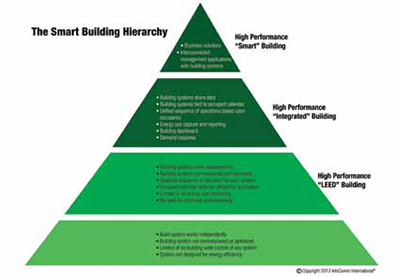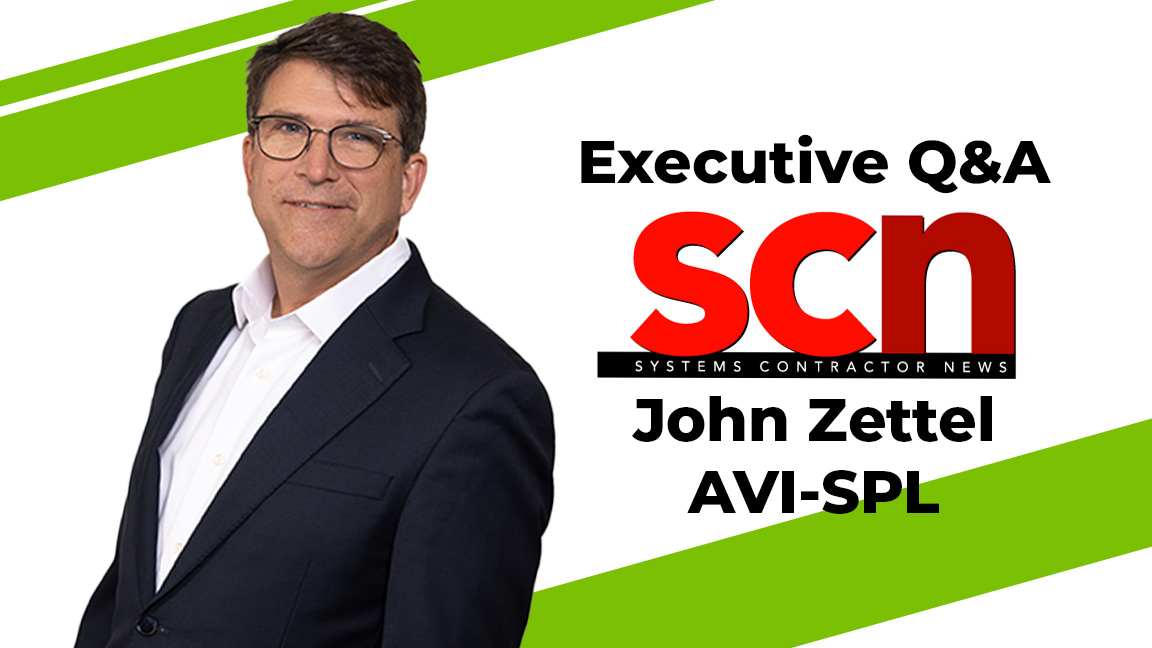How Can Integrators Get a Piece of the Smart Building Pie?

The Vancouver Convention Center in Vancouver, BC, Canada, the world’s first LEED Platinum convention center, uses Crestron Integrated Building Technology.What’s more intelligent—you, or the space you’re currently occupying? While recent research estimates that your brain may be capable of an impressive 100 million MIPS (Million Computer Instructions per Second), don’t get too comfortable. Smart buildings are catching up with you.
There are myriad reasons for the acceleration. As pressure for profits mounts on almost every industrial sector you can name, corporations have renewed incentive to optimize the spaces they occupy. Tenants expect ever-greater levels of control and flexibility, while energy consumption and operating costs need to become even more efficient—modern real estate realities that require immediate attention.
“Building owners are looking for ways to provide cutting-edge environments and services that allow them to attract and retain tenants,” said Rick Huijbregts, vice president of smart connected communities for Cisco. “I believe that a ‘smart building’ is a building that combines smart people with smart technologies and smart processes to deliver an environment that is economically, environmentally, and socially sustainable, while providing the highest levels of customer experience and flexibility for the future.”
Nic Scott, marketing solutions manager for Crestron, sees a smart building as one that’s fully automated, with everything from AV to lighting, shades, security, room scheduling, BMS, and HV AC on a single network. “A smart building treats all systems as a resource that can be monitored, managed, and controlled,” he said. “Awareness is half the battle. In order to accomplish a truly energy efficient smart building, the systems need to be able to make changes and adapt to the needs of the building occupants based on the data findings.
“A smart building is designed to be a living entity—maintain and adapt as the needs of the building change,” Scott continued. “It needs to remain agile without requiring a major infrastructure shift as time goes on and innovations in technology take place. A truly smart building can evolve as technology evolves—as long as the proper infrastructure has been put in place.”
Cost and energy efficiencies are often the first considerations for smart buildings. But David Wilts, chairman of InfoComm’s Smart Building Task Force, and associate principal and smart buildings practice leader at ARUP, warns AV integrators not to be blinded by science in this sector. “Definitions tend to focus on what a smart building is able to do, but instead we want to look at it from a holistic standpoint that integrates the design phase, the construction phase, and the operations phase,” he said. “Also the idea needs to go beyond energy efficiency. It’s about operational efficiency and transforming the user experience in the built environment.
“That user isn’t just a guest at a hotel, either,” Wilts added. “It includes the facility manager at the hotel, the building engineer, the housekeeper, and the concierge. How can we make their lives easier? Once you start looking at all the different applications and systems, and how those individuals need to interact with the building itself, you can transform the experience in the built environment.”
A daily selection of the top stories for AV integrators, resellers and consultants. Sign up below.
As a result, AV pros have a wide range of places to focus their attention as they work to achieve smart building mastery. “In my opinion it’s all about the middleware,” observed Steve Emspak, partner with NYCbased international consultant Shen Milsom & Wilke (SMW). “Intelligence has existed for some time now in endpoint devices like thermostats, sensors for temperature, light, humidity, security, HV AC and its control, and elevators as well. The art form is stitching it all together in a manageable platform at a consumable cost built on a level of automated intelligence and practicality, which are at times in conflict with each other.”

According to Huijbregts, the biggest shift is the migration of lighting to IP as LED and POE (power over ethernet) become available at the fixture level and more affordable for large-scale deployments. “In our Cisco Canada Innovation Centre,” he said, “we have the first fixtures already installed and we expect to see commercial deployments not long from now. Power meters are also becoming native IP devices.
“In Canada,” continued Huijbregts, “we’ve been working with Triacta, a company that provides a very integrated solution. This is just the beginning: we’ve seen parking solutions, AV, signage and media solutions, and even paper towel holders and toilets become smart devices in connected buildings. With the network as part of a building’s DNA, we’ll see the proliferation of more and more devices—internet of everything.”
Shane Vega is the physical security market manager for AVI-SPL. Not surprisingly, Vega sees physical security and public safety as a key area of smart building focus for AV integrators. “This has been a hot topic for quite some time and has continued to gain momentum,” he said. “Traditionally, physical security has been handled on a facilities level with minimal resources. However, with systems moving to IP and the increased concern for public safety, physical security is no longer a task to be handled by your traditional integrator and a building’s facilities department.
“Information management platforms, like PSIM (Physical Security Information Management) will be taking the lead within smart building, campus, or city initiatives,” continued Vega. “This platform is used to integrate and correlate data from systems that are typically independent of one another: digital media, pro AV, and communication, fire alarm, physical security (surveillance, access control, and intrusion), building automation, building management, and emergency notification systems. Traditionally, you would have a design that incorporates the integration of similar technologies; we now have the ability to integrate and correlate data from all of these systems under one platform.”
In turn, AV integrators—those who can pivot successfully in the complex landscape that the smart building environment represents— may unearth many new opportunities. “Whether we are talking about smart buildings, campuses, or cities, the methodology is the same: integration, information, correlation, automation, communication, and response,” explained AVI-SPL’s Vega. “The obvious is true—the more information you can collect and correlate to provide actionable data, the more efficient and safe your building, campus, and/or city becomes. As such, the size and scale of an opportunity for an AV integrator is directly proportionate with their ability to reinvent themselves. AVISPL is constantly evolving to stay ahead of the technology curve and client demand: When you talk about AV integration, where does it begin? More importantly, where does it end?”
“Companies are responding to what’s happening in the marketplace—a convergence of low-voltage communication systems, and lighting, and other kinds of solutions to a common infrastructure,” said Claudia Barbiero, marketing solutions manager for Crestron. “All of these technologies are converging now. Organizations are positioning their businesses and skillsets to be experts in the emerging field of intelligent building technology—systems include audio, video, security, wireless, BMS, and telecommunications. [Crestron’s] Integrated by Design brings together in a seamless way all of the disparate building systems that have been designed and even installed for years in silos.”
Meanwhile, ARUP’s David Wilts encouraged AV integrators to dig deep into clients’ needs and motivations whenever possible. “It’s very short-sighted of the AV integration community to simply say (to the client), ‘Where do you want your digital signage?’” he stated. “Because that’s all the integrator is going to sell on the job, if that’s all they care about. But you have a much more engaging, value-laden proposal for the client if you care about what content they want to display on the signage, how they can tie that to the building’s property management and calendar system. Or when it comes to active way-finding, be able to advise on how to guide guests through the building.”
David Weiss (www.dwords.com) writes extensively about AV, audio, and broadcast technology.
